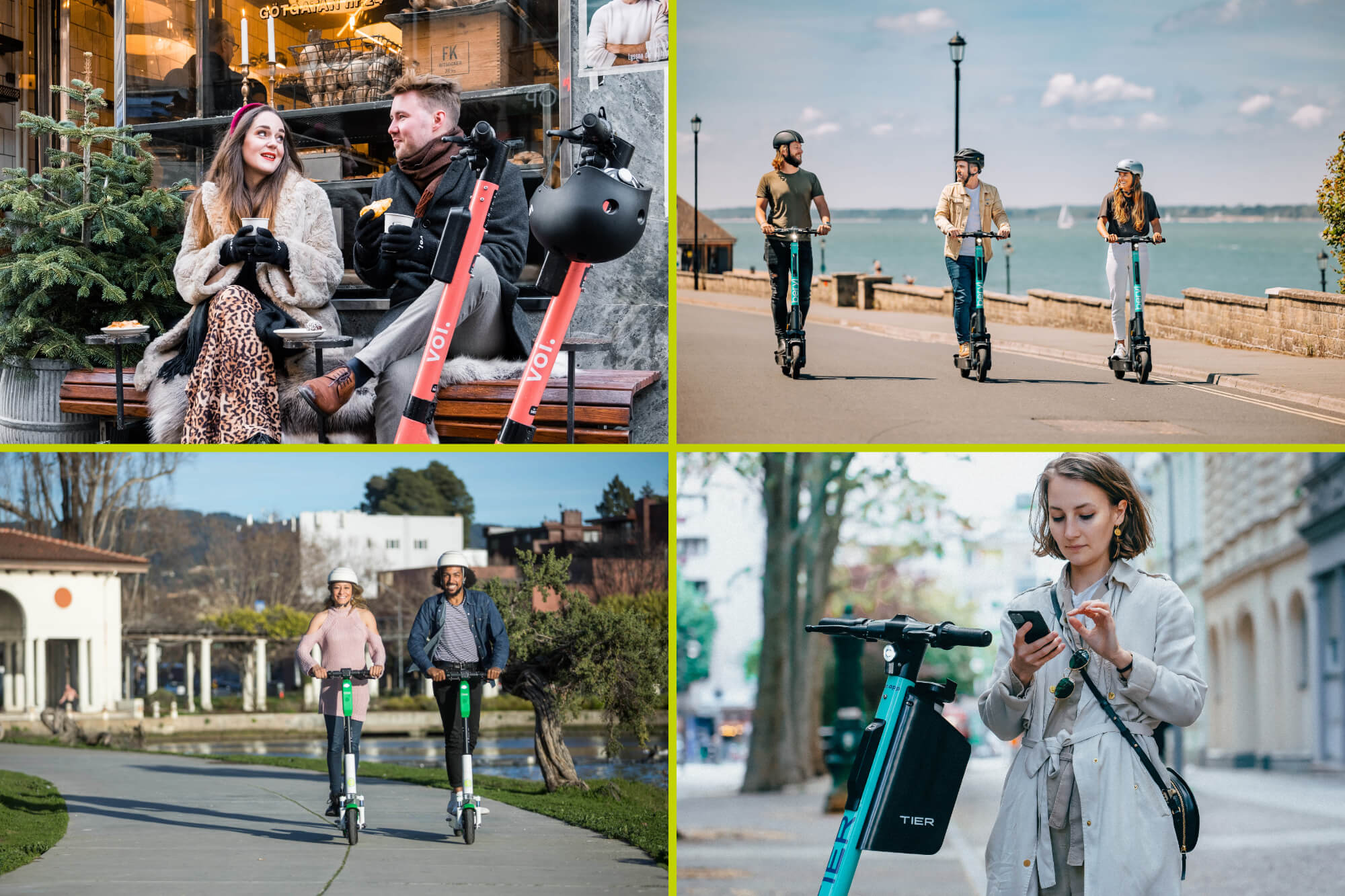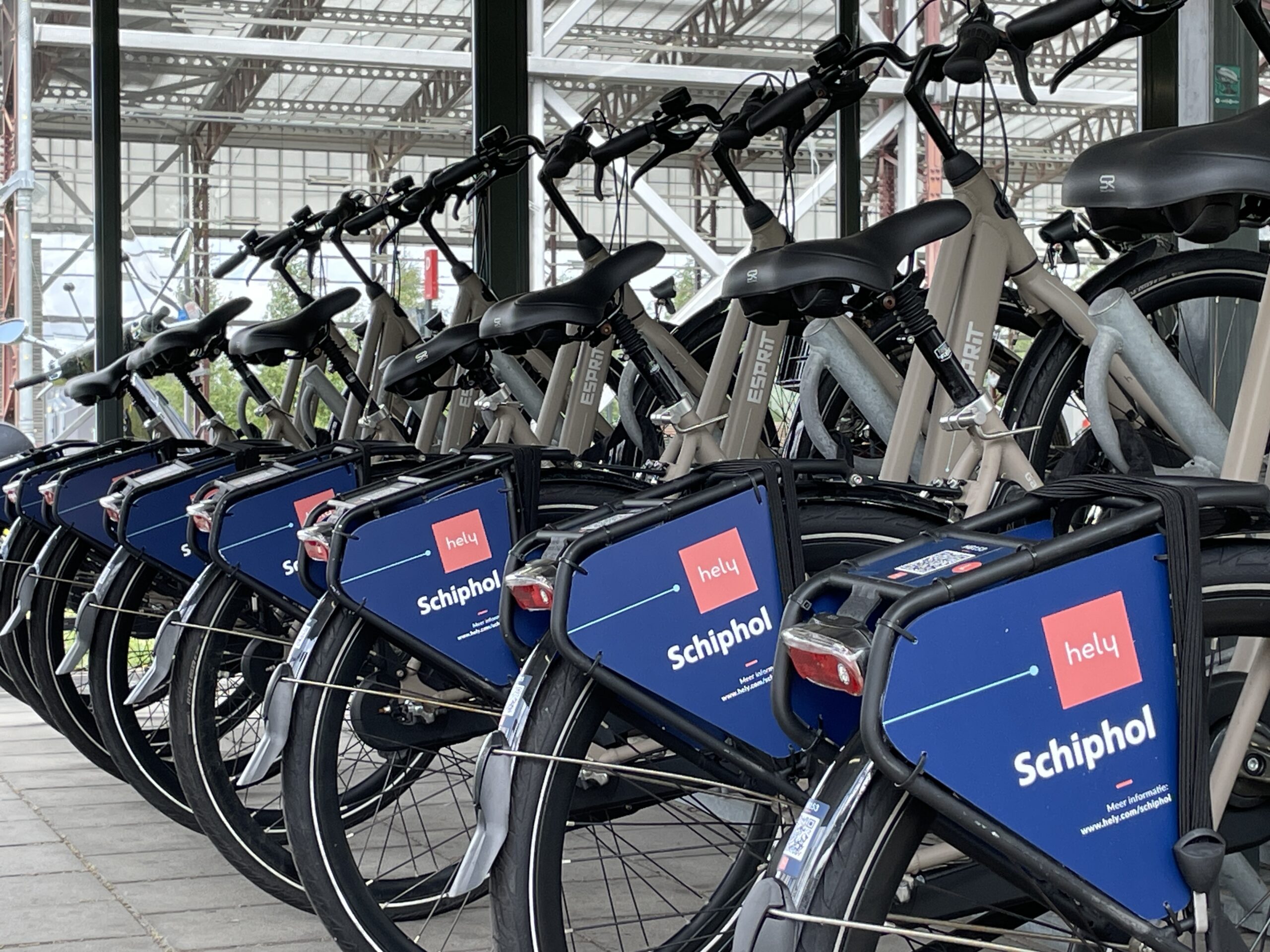Shared mobility is gaining momentum – offering prospects for reducing traffic, cleaning up city air, and providing users with more flexible transportation options.
However, despite its potential, shared mobility often seems to take a backseat to traditional public transportation and private vehicles in the eyes of local authorities and infrastructure planners.

Experts see shared mobility as a game-changing revolution in transportation. It surpasses the earlier revolution of the 20th century when personal cars became widely affordable and accessible. Now, with the rise of shared mobility and environmental concerns, the old notion of “one car per person” is becoming outdated.
In light of this, authorities worldwide should proactively prepare for a future where shared mobility plays an increasingly significant role. In this blog post, we’ll explore different ways authorities and legislators can encourage shared mobility – and why it’s totally worth it.
The Positive Impact of Shared Mobility
Shared mobility has the potential to fix some of the problems we face with transportation today, benefiting users, cities, and the environment. Here are the key benefits of shared mobility:
- Reduced congestion: Shared mobility can alleviate traffic congestion, leading to smoother traffic flow and shorter commute times.
- Environmental sustainability: Shared mobility can reduce the number of vehicles on the road, resulting in lower greenhouse gas emissions and a smaller carbon footprint. This helps combat air pollution and mitigate the environmental impact of transportation.
- Improved transport accessibility and flexibility: Shared mobility services make transportation more accessible, especially for those without private vehicles or limited mobility options. They also offer convenient alternatives to traditional transportation methods.
Considering the urgent need to combat climate change, shared mobility holds a significant promise as a greener transportation option. The European Union’s Green Deal aims to achieve a 90% reduction in transportation-related greenhouse gas emissions by 2050. Shared mobility – coupled with increased adoption of electric vehicles and a broader shift in transportation behaviors – will likely play an important role in achieving this goal.
However, for shared mobility to truly flourish and revolutionize transportation, it needs a supportive environment backed by legislative frameworks and infrastructure planning. So, let’s take a closer look at how authorities can foster wider adoption of shared mobility.
1. Favorable Regulations with an Eye on the Future
In the past, shared mobility solutions and business models have faced challenges in gaining acceptance from regulators. A prime example is the initial response of local authorities to Uber’s novel services at the time – ordering them to cease their operations immediately.
Shared mobility services can disrupt traditional transportation models – which may not be welcomed by everyone. However, the undeniable popularity of these services, exemplified by the rapid success of Uber, demonstrates the high customer demand.
Instead of battling against it, authorities might want to shift their focus to creating a supportive legislative framework, recognizing the significant benefits shared mobility can bring. It means regulations that prioritize safety, fair competition, consumer protection, and quality standards – creating an environment where shared mobility can thrive and provide reliable services to customers.
Shared mobility is constantly evolving, which means that regulations need to be flexible and adaptable to keep up with emerging technologies and new challenges. For example, as autonomous vehicles become a possibility, authorities will need to establish guidelines for their safe integration into existing transportation networks.
2. A Collaborative Approach
Collaboration between local authorities and businesses can be a decisive factor in creating a favorable environment for shared mobility. By working together, they can tackle common challenges, share data, and develop integrated transportation solutions.
Public-private partnerships can also involve incentives like tax breaks or subsidies to encourage the adoption of shared mobility. For example, offering tax breaks to companies that implement ride-sharing programs for their employees can encourage the use of shared transportation options instead of individual cars. Similarly, providing subsidies for shared mobility providers can help offset the initial costs of implementing and expanding their services.
Sharing data between shared mobility platforms and transport authorities is another way to benefit from this cooperation. The platforms have valuable information on accidents, trip patterns, and driver availability. Sharing this data with local authorities can help improve the transportation network, enhance travel apps, and identify underserved areas.
3. Building Infrastructure to Support the Future of Transportation
To meet evolving transportation needs, authorities should invest in infrastructure that supports innovative modes of transportation like electric vehicles and shared mobility services. By considering the needs of shared mobility users, infrastructure planners can make it a much more attractive transportation option.
Here are the key infrastructure needs for shared mobility:
Integration with existing infrastructure: To offer users smooth and effective transportation choices, shared mobility must seamlessly integrate with current transport systems like public transit. It should enable users to plan multi-modal journeys and switch between different modes of transport without hassle. For example, users should be able to seamlessly transition from a shared bike or scooter to a bus or train.
Charging stations: Keeping shared electric vehicles performing at their best relies on maintaining their charge. This requires establishing a network of strategically positioned charging stations throughout urban areas. If we’re aiming for more people to use electric vehicles, we need to make charging them easy and accessible.
Dedicated parking: Shared mobility services need designated parking areas for their vehicles, such as bike racks and car-sharing parking spots. Well-organized parking infrastructure can reduce street clutter and make it easier for others to grab a shared mobility vehicle.
Information infrastructure support: Running shared mobility services smoothly, including handling bookings, payments, and logistics, depends greatly on a reliable information infrastructure foundation. With the advent of advanced networks like 6G, users will increasingly rely on this infrastructure to stay connected and make the most of these services.
The Shared Mobility Landscape in France
Paris’s recent ban on free-floating e-scooters has put France in the spotlight. To take a closer look at the shared mobility environment in France, we turned to Manon Lavergne, CEO of Viluso, a shared micromobility operator. We asked for her insights on the state of micromobility in the country.
Since the Mobility Orientation Law in 2019, the French government has been working to make shared transport easier to access everywhere. At COP 26 in 2021, France undertook to cut its CO2 emissions by 55%.
According to Manon, personal vehicle ownership in urban settings is losing favor among many French citizens, and Paris stands out as a shared micromobility epicenter. The city pioneered self-service shared mobility networks like Vélib’ (2007), Autolib’ (2011), and Cityscoot’s shared electric scooters (2016).
However, in April 2023, Paris residents voted to ban free-floating e-scooters in the city. The reasons behind this decision included riders competing for space with pedestrians on sidewalks and complaints about e-scooters cluttering the pavements when parked.
Captur’s case study on e-scooter parking habits in Paris revealed that the majority of users encountered no problems when parking scooters in designated bays. However, outside of the designated areas, users had to compete with other vehicles, resulting in poorer parking choices.
This example again emphasizes the need for proper infrastructure to support shared mobility. Lots of cities around the world were mainly designed with private cars in mind – which can create challenges for accommodating shared mobility solutions.
Anne Hidalgo, Paris’ Mayor, campaigned with a strong green agenda and has introduced various changes to tackle pollution and traffic jams. Her vision includes a “15-minute city” where people can access work, shopping, healthcare, education, and leisure within a 15-minute walk or bike ride from their homes.
Yet, the chaotic state of free-floating e-scooters in Paris resulted in their ban. This scenario raises a question for other global cities: How can shared mobility be encouraged without disrupting other transportation choices and pedestrian movement?
According to Manon, the upcoming 2024 Olympic Games in Paris, which will draw many visitors, will provide valuable insight into the city’s transportation system – including the viability of shared mobility.
Shared Mobility Is Here to Stay – So Start Planning Today
By adopting a supportive approach, authorities worldwide can play a crucial role in enabling the full potential of shared mobility. While it may require a shift in mindset, the potential gains of reduced congestion, environmental sustainability, and improved transportation options make it a worthwhile consideration.
We know that shared mobility is here to stay and will only expand in the coming years. By taking a more proactive stance, authorities will be in a better position to integrate and maximize the full benefits of shared mobility.
This article was originally published by ATOM Mobility.














